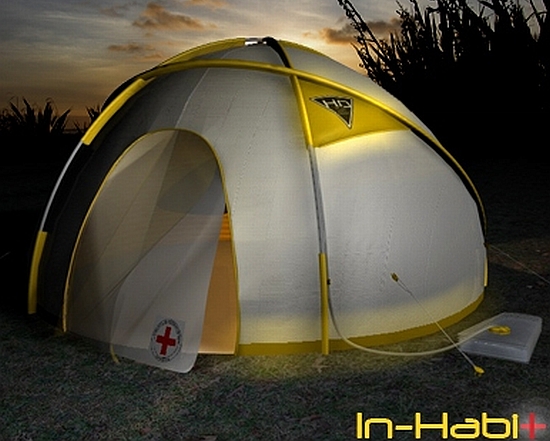
Natural disasters strike without warning and it pays to be prepared for the same. Apart from causing death and destruction, natural disasters displace large swathes of human population. Where do these people go and how will they be housed? Addressing this very issue, we take a look at ten sustainable living structures that will help people survive the aftermath of nature’s fury.
• HOMErgent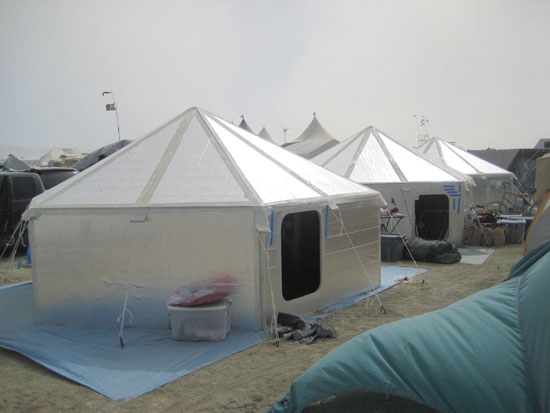
The HOMErgent is an emergency housing structure that can be quickly set up with minimal effort. Based on a unique Hexayurt design, the HOMErgent can be quickly dispatched to affected zones as it comes in a flat fold-able design. Unlike conventional tents, the HOMErgent lasts for almost 20 years, thus making it an excellent proposition to be reused while required. To make it a truly sustainable structure, the HOMErgent is endowed with solar, wind and geothermal generators for powering the needs of it’s occupants. Quite impressive!
• Water Shelter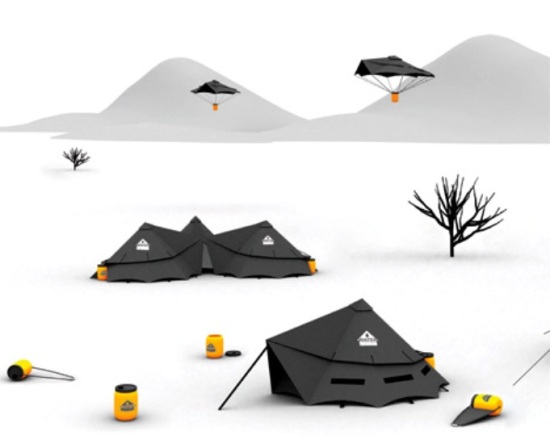
Moving ahead, let’s look at Robert Nightingale‘s Water Shelter. The Water Shelter is primarily designed to cater to regions prone to flooding. The uniqueness of this structure centers around the way it assists the victims, during every phase of disaster relief. Not only does it provide housing, it also can be a temporary shelter even as it is being transported. Talking of which, it can be dropped to safer ground from aircraft. The structure also has a roof harvesting system which takes care of the drinking as well as sanitary needs. This makes the Water Shelter a very versatile design that manages to be practical enough for real time usage.
• Uber Emergency Shelter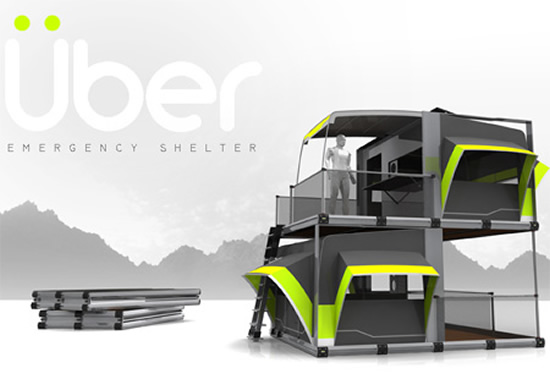
Nobody really gives a damn about style during disasters, right? Wrong! Designer Rafael Smith has come up with very sustainable emergency shelter that manages to look stylish as well. Enter the Uber Emergency Shelter. True to it’s name, the shelter manages to be stylish as well as utilitarian. The structure does justice to it’s sustainable tag by having solar panels on it’s roof. Also, it has been put together using recycled and reusable materials. Transporting the shelter too, is a breeze as the shelter folds into multiple, compressed layers.
• Sphere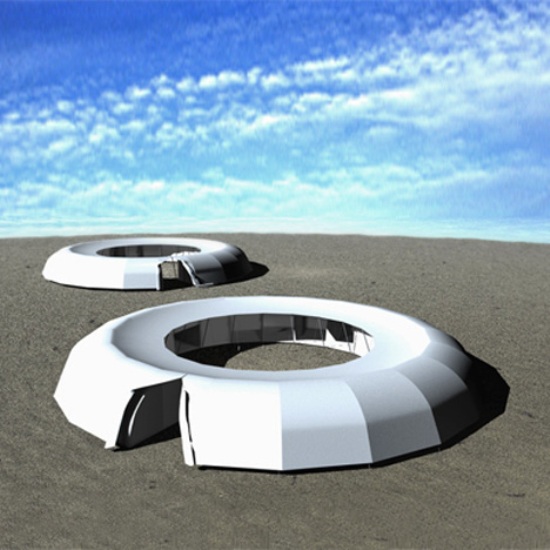
Survival in itself is a big ask in refugee camps at disaster stricken zones. Here is a shelter that even promises privacy during calamities. The Sphere is a rounded living space that can withstand the harshest weather courtesy it’s waterproof canvas exterior. On the inside, tents are constructed using permeable nylon. It has nineteen units housing three people each. The privacy part is provided by removable partitions which separate each unit. However, occupants can bunch up in the central, open air atrium for cooking and bonding. Well, here is the icing on the cake: The entire shelter is recyclable.
• Amphibious House
Global warming is for real and people on the coast could soon see their houses submerged.Waterstudio has a solution in it’s Amphibious house. This house is a conventional home during dry weather. But, when the floods arrive, the Amphibious House can transform itself into a home that floats. How does it do this? It does it with a float core that sits snug in the foundation. In order to keep it floating without going astray, steel cables anchor the home to a single place. Very cool!
• Pallet House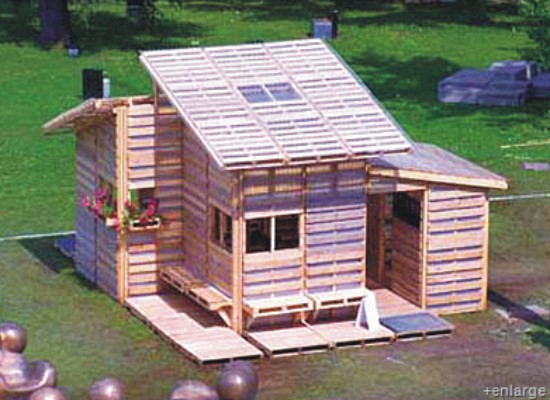
The Pallet House is every bit a conventional home save it’s construction and portability. Designed by Azin Valy and Suzan Wines of I-Beam Design, the Pallet House is made of recycled shipping pallets. Also, the Pallet House can be set up in very less time making it ideal for usage during calamities. If needed, the house could also become a permanent dwelling through usage of conventional materials on the existing structure. And the knock out punch, well, an entire home can be built in as less as $500. Beat that!
• Recovery Shelter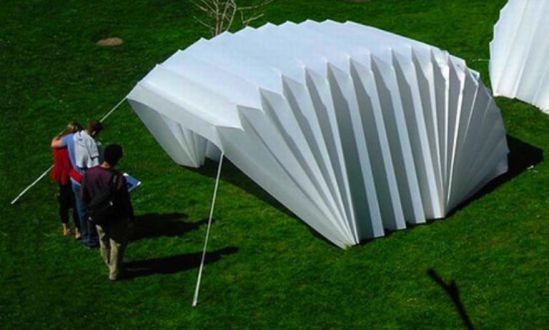
Mathew Malone knows that natural disasters don’t give victims much time. So, he went ahead to put together the Recovery Shelter. This shelter can be set up very quickly in adverse conditions thus making it a veritable life saver. Made out of 100% polypropylene, the Recovery Shelter is very light and can house four occupants. This radical looking structure has strategically places ridges that even harvest rain water. Smart design, we say!
• Cocoon Emergency Shelter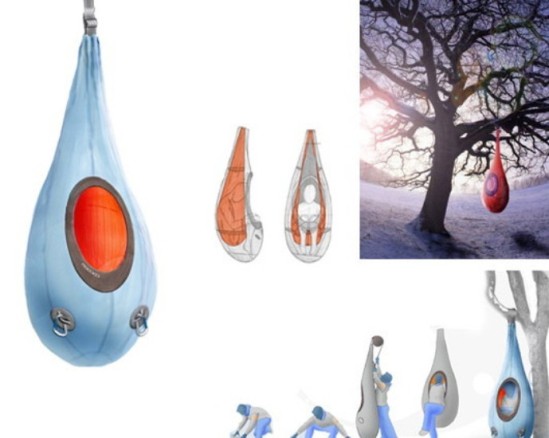
Campers, hikers and mountaineers will love to have one of these. The cocoon, designed byJohn Moriarty, is a small shelter that can be suspended from almost any strong point. What is essentially does is, it keeps it’s occupant nice and warm even as he or she waits for help to arrive. All this is done courtesy the unique heat retaining fabric the cocoon is made up of. The occupant’s body heat is retained in this manner. A veritable life saver when the conditions turn harsh? You bet!
• Folding Bamboo House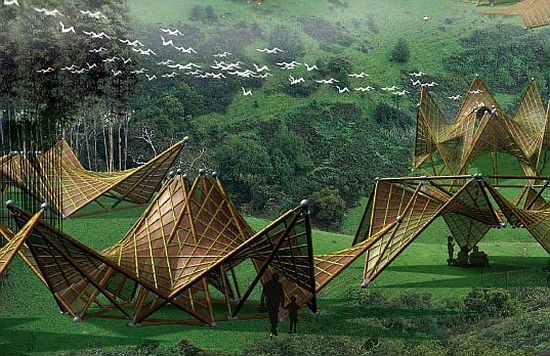
For ages. people in the tropics have always used the humble bamboo for housing. Now, the ubiquitous bamboo gets some designer treatment to get transformed into an emergency shelter. Brainchild of designer Ming Tang, the structure is created from bamboo poles with recycled paper forming it’s roof. And the biggest takeaway is the fact that the Bamboo Housecan be folded and transported easily. Like all things natural, this is a totally sustainable and recyclable solution that will be a great shelter during natural disasters.
• In-Habit
On first glance, the In-Habit looks like the regular tents campers use. A closer look reveals much more than a simple tent. The In-Habit is a creation of designer Todd Kramer. The In-Habit’s tent is made up of recycled PET bottles which otherwise would have added up to the world’s plastic pollution. Lighting is provided by solar panels which light up the low power-high luminosity OLEDs. The tent will also keep occupants warm since it is made up of a heat retaining material. Rain water and dew will collect into a expandable bag which can later be tapped for sanitation. If all that isn’t remarkable enough, the In-Habit is very light, making it perfect to be lugged around. Terrific is a mild word to describe the In-Habit.




